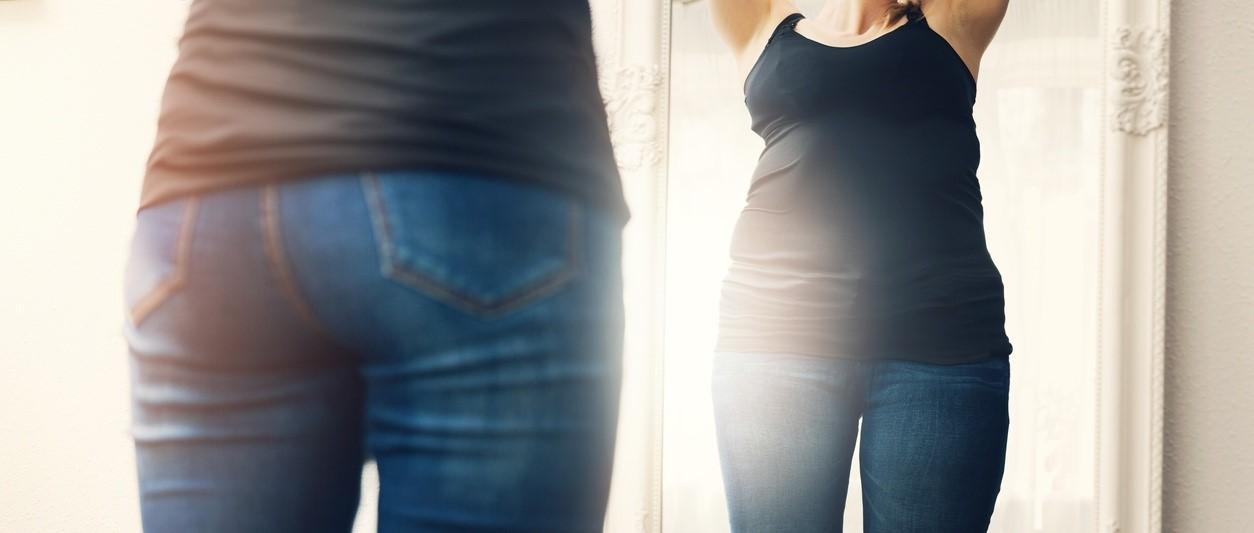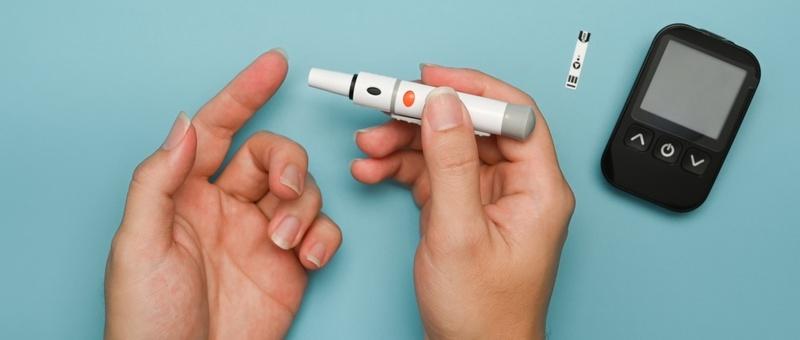
Continuous glucose monitoring in type 1 diabetes
Peer reviewed by Dr Hayley Willacy, FRCGP Last updated by Dr Sarah Jarvis MBE, FRCGPLast updated 25 Sept 2017
Meets Patient’s editorial guidelines
- DownloadDownload
- Share
- Language
- Discussion
Type 1 and type 2 diabetes are both potentially serious conditions which should always be taken seriously. They’re both diagnosed on the basis of high blood sugar. But in other respects they are very, very different. Type 2 is largely down to lifestyle – getting type 1 is absolutely nothing to do with whether you eat too much sugar, carry excess weight or don’t exercise enough. People with type 2 diabetes often never need insulin – those with type 1 need it from day one. Many people with type 2 diabetes never need treatment that carries a risk of disabling low blood sugar (hypoglycaemia) – people with type 1 live with this risk every day. As a result, many people with type 2 never need to check their blood sugar several times a day – for people with type 1, it’s a highly unwelcome occupational hazard.
Sign up for our free 10-week Diabetes course!
Each week, we'll explore a different topic to help you better understand and manage your diabetes, including everyday living and medicines, to mental wellbeing, the latest in diabetes tech, and nutrition.
By subscribing you accept our Privacy Policy. You can unsubscribe at any time. We never sell your data.
In this article:
Continue reading below
New testing options on the NHS
So the news that for the first time, a fingerprick-free testing device – the Freestyle Libre monitoring system – is to be made available on the NHS Drugs Tariff from November 2017 has been met with excitement. Until now, people have either had to pay for it privately (at a cost of about £58 for the reader and 2 months of sensors costing about £114) or apply for funding on an ‘exceptional case’ basis, called an Individual Funding Request. But this doesn’t mean an end to fingerprick testing for everyone, and there could be trying times ahead for patients trying to access it.
Glucose monitoring using a 'flash' system involves inserting a tiny sensor under your skin once a fortnight. This measures the glucose in your interstitial fluid (Ithe fluid that surrounds your cells). To get a reading, you wave a reading device over the sensor. The level of sugar in your interstitial fluid lags behind your blood sugar levels by a few minutes, especially if your blood sugar is changing rapidly. That means you may still need a fingerprick test before you take more insulin or glucose for a hypo on the basis of a reading.
Nor is Flash glucose monitoring the only option we can expect to be available on the NHS Drugs Tariff in years (or even months) to come. Several companies have developed Continuous Glucose Monitoring (CGM) systems, which automatically record the glucose levels in your interstitial fluid and send them to a monitor without you swiping over the sensor. In practical terms, perhaps the biggest difference is that this allows an alarm to be set up, alerting you to high or low blood sugar without you actively taking a reading. According to Diabetes UK, ‘Flash GM is not a less expensive alternative for CGM, rather the different technologies have different uses for specific groups in particular circumstances’.
These developments include the first long-term implantable CGM device, the Eversense XL, which is implanted under the skin. The table below gives a summary of the main comparisons between the two technologies.
Freestyle Libre glucose sensing | Eversense XL CGM |
Measures glucose levels in interstitial fluid | Measures glucose levels in interstitial fluid |
Easy and convenient – glucose measurement by waving readerover sensor, no need for fingerprick | Easy and convenient – automatic glucose readings on phone, no need for fingerprick |
Increased frequency of glucose monitoring – average during trials 16 recordings a day (compared to 5.1/day for fingerprick testing) | Increased frequency of glucose monitoring – records automatically every 5 minutes |
No need for fingerprick testing – downside of this is lack of calibration with sensor readings | Twice daily fingerprick testing required for calibration |
Licensed for children over 4 years and adults | Licensed for adults over 18 |
Gives indication of glucose trends (up/down/stable) + last hours of readings along with each reading – may reduce risk of hypos and high blood sugar | Gives indication of glucose trends (up/down/stable) along with each reading – may reduce risk of hypos and high blood sugar |
No audible alarm – indication of hypo requires sensor to be swiped | Audible alarm to alert patient (or parent) or hypo. Smart transmitter vibrates if hypo even if phone not in range |
No audible alarm | Detection rate at least 81% at hypoglycaemia alert setting |
Collects readings and stores for 8 hours, sends this data to a receiver when swiped over it. If sensor not swiped, data from longer than 8 hours ago is lost | Automatically synchs to cloud account 2 hourly. Bluetooth sensor between device and phone. Connectivity about 98% over 6 month period |
Secured with adhesive tape to skin with filament under skin - bluetooth transmission from device to mobile app when swiped | Sensor implanted just under skin with transmitter secured with adhesive tapeto skin over sensor - bluetooth transmission to mobile app |
Information can be shared with clinician | Information can be shared with clinician |
Changed every 2 weeks – New sensor must be applied if it is removed | Lasts up to 180 days Transmitter can be taken off and put back on - data captured |
Most common reasons for discontinuation in 1st year 1) Sensor uncomfortable to wear (stuck to skin) 2) Problems inserting (changed every 2 weeks, self-inserted under skin) 3) Problems with adhesive holding sensor to skin | 1) Needs to be inserted subcutaneously 2) Effectiveness not compromised if problems with adhesive for transmitter |
Monitoring via ‘Libre link’ – not real-time remote monitoring | Sends real-time remote monitoring data electronically |
Reads high if patient takes paracetamol | Does not read high if patient takes paracetamol |
| |
Study in type 1 diabetes - reduction reduced time in hypoglycaemia but change in HbA1c not documented - this included only patients whose blood glucose was well controlled | Study in type 1 diabetes - average HbA1c reduction of 4mmol/mol (0.35%) over 180 days with Eversense CGM. CGM (not implantable version) - significant reduction in HbA1c in patients with baseline HbA1c over 53 mmol/mol (7%), severe hypoglycaemia reduced by 45% |
Why test more?
Hypoglycaemia causes a variety of symptoms including
Hunger, irritability, anxiety, tremor and blurred vision in the early stages
Confusion, irrational behaviour, collapse and even death in later stages.
People who suffer more than one ‘severe’ hypo (needing outside assistance) a year can lose their driving license. And people who lose ‘hypo awareness’ are at much higher risk of severe symptoms. I’ve seen mothers who don’t feel safe looking after their kids, and men terrified to leave the house in case they’re suddenly hit by a hypo.
On average, people with type 1 diabetes test their blood sugar just over 5 times a day. But NICE (the National Institute for Health and Care Excellence) says that testing up to 8 times a day in Type 1 diabetes is cost effective. This is based on evidence that on average, more testing correlates with tighter blood glucose control and lower HbA1c. NICE recommends that people with type 1 diabetes should be aiming for an HbA1c (a measure of your average blood glucose over the last 3 months or so) of 48mmol/mol – a level almost equivalent to someone who doesn’t have diabetes. High blood sugar carries a risk of damage to the kidneys, eyes and nerves, as well as heart attack and stroke.
Continue reading below
Who might be eligible?
NICE has laid out criteria for people with type 1 diabetes who should be considered for CGM, although this does not include the Freestyle Libre. They include:
More than one severe hypoglycaemia brought on by no obvious preventable cause
Complete loss of hypo unawareness
Frequent problematic hypos without early warning symptoms
Extreme fear of hypos causing problems or distress
Not being able to get your HbA1c under 75mmol/mol (9%) despite blood sugar at least ten times a day
In addition, you need to fulfil all the following criteria to qualify for CGM:
The intended user is committed to using CGM at least 70% of time and keep it regularly calibrated
The user is on multiple daily insulin injections or insulin pump therapy
The Health team providing CGM has expertise in its use
It should only be continued if as a result, HbA1c drops to and stays below 53 mmol/mol (7%), of ir HbA1c is reduced by 27mmol/mol (2.5%)
Even if you do fulfil all these conditions, getting access to Freestyle Libre is not a given. Firstly, there are negotiations to be had with ‘local health economies’ about funding – that’s management speak for a possible postcode lottery. Secondly, Diabetes UK makes it clear that ‘Flash GM is not the appropriate tool for those who have completely and irreversibly lost their hypoglycaemia awareness, which means they cannot recognise when their glucose levels are dangerously low. In this instance CGM which provides alarms is more appropriate.’ This may give cash-strapped CCGs an excuse to withhold funding, at least until CGM is available on the NHS Drugs Tariff.
Further down the line?
Several CGM devices with an alarm have been developed. As yet, none are available on the NHS Drugs Tariff. However, with the approval of the Freestyle Libre device and the recommendations of NICE on CGM, it is highly likely that more will follow.
Within the next year or two, I anticipate patients at high risk of hypoglycaemia being offered the option of Flash GM or CGM, and weighing up their personal preferences. It’s not here yet, and there may be some battles ahead – but after years of people with type 2 diabetes getting all the headlines, it looks like it’s finally the turn of people with type 1.
Patient picks for Type 1 diabetes

Diabetes
What is diabulimia?
When our children are tiny, we sometimes feel helpless - perhaps at 4 am when they're crying inconsolably or have been coughing for hours. Yet at least we know exactly what's going on, because we're in charge of every aspect of their lives. How much harder it is when our children are no longer entirely dependent and we have to rely on them to make the right choices.
by Dr Sarah Jarvis MBE, FRCGP

Diabetes
MHRA approves teplizumab to delay progression of type 1 diabetes
Teplizumab (Tzield) has been approved by the Medicines and Healthcare products Regulatory Agency (MHRA) to help delay the onset of Stage 3 type 1 diabetes (T1D). Read on to see what this means if you are prescribed teplizumab and what it does for you.
by Lawrence Higgins
Article history
The information on this page is peer reviewed by qualified clinicians.
25 Sept 2017 | Latest version

Ask, share, connect.
Browse discussions, ask questions, and share experiences across hundreds of health topics.

Feeling unwell?
Assess your symptoms online for free
Sign up to the Patient newsletter
Your weekly dose of clear, trustworthy health advice - written to help you feel informed, confident and in control.
By subscribing you accept our Privacy Policy. You can unsubscribe at any time. We never sell your data.